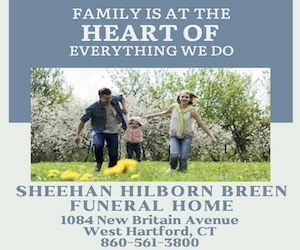Final hearing set for end of month
By Cindy Mindell
COS COB – Greenwich Reform Synagogue (GRS) will have to wait until the end of the month to hear a decision by the town’s Planning and Zoning Commission on a proposal to construct a new house of worship in a residential neighborhood of Greenwich.
Since the synagogue’s plans were made public in October, a group of neighbors have voiced opposition, saying that the proposed facility is too large for the intended site and would have negative impact on nearby wetlands.
Founded in 1976, GRS inhabited an 11.5-acre site on Stanwich Road for 20 years before selling the property to the adjacent Stanwich School last June. The 150-family congregation, which serves Greenwich and the surrounding communities of Stamford and Westchester County, N.Y., has made its temporary home at First Congregational Church of Greenwich in Old Greenwich. The religious school, using rented space at Stanwich School, serves 50 to 75 students.
In October, after considering 11 sites around Greenwich, the synagogue purchased 92 Orchard St., a residential property of slightly less than one acre. GRS wants to add two adjacent properties — one at 22 Osee Place, behind 92 Orchard St., and a 38,000-square-foot piece of the neighboring property at 96 Orchard St. In order to combine the three parcels, the synagogue needs Planning and Zoning Commission approval to modify the existing lot lines.
The application is opposed by a group of neighbors, Cos Cob Residents Fighting For Residential Rights. Not only would the GRS proposal impact nearby wetlands in a flood-prone area, they argue, but the land-use plan actually constitutes a subdivision.
“It is quite normal for new developments to be opposed in the neighborhood, so we were kind of expecting that we would have some fireworks,” says Robert Birnbaum, who has served as GRS president since July. “This is ‘not in my back yard’ kind of opposition, which is natural and increases as the process unfolds.”
The synagogue did not reach out to neighbors until the various lots in question were either purchased or under contract, Birnbaum says. “They received a notice with the legal and technical issues regarding a lot-line revision, and got a letter from me explaining GRS and saying, ‘Here we are,’ and ‘This may come as a surprise to you,’” he says. “We indicated that we want to be a good neighbor, to meet and talk with residents, and that we have no specific plan yet.”
In a request for proposals (RFP) posted on its website in October, GRS cited plans to build a 20,000-square-foot facility with parking for 100 cars. The new building, budgeted at $5.7 million to $6.2 million, would include a sanctuary, social hall, chapel, and small kitchen, 10 preschool and religious-school classrooms, a board room, four offices, storage space, and additional flexible areas to serve the congregation’s needs. The RFP also indicates that the facility should be designed “with possible future expansion in mind.”
Birnbaum grants that the neighbors have “perfectly legitimate concerns” – a new building’s impact on traffic, property values, and neighborhood character – issues that GRS plans to address as part of the Planning and Zoning process, he says. “But there has also been a tendency for some people to catastrophize the potential impact,” he says.
The neighbors’ group is represented by attorney Mario Coppola. “This is about complying with regulations, not about people being against religious use of the property,” he says. GRS’s initial filing of its plan in November did not comply with the town’s lot-shape requirement. “We presented the commission with case law showing that, when you convey 0.89 acres from one lot to another, you’re changing it in such a manner that you’re creating a subdivision,” he says. In addition, the plan would create two odd-shaped lots that would significantly reduce the amount of street frontage for access and egress, increasing the amount of activity and traffic at the site.
The synagogue presented a revised plan at the Jan. 8 meeting of the Planning and Zoning Commission, which postponed voting on the matter until Jan. 29 in order to gather more information from both sides.
Birnbaum says that once GRS is granted a lot-line revision, it will complete the property transaction and begin the design process and invite public input.
“As design concepts are developed, we’ll sit down with neighbors and present enough specifics so that people can see what we’re talking about and react in a more informed manner,” he says.








 Southern New England Jewish Ledger
Southern New England Jewish Ledger









